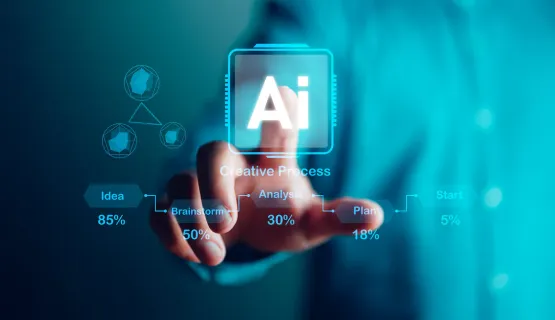In the fall of 2022, an Institute for Work & Health (IWH) team brought together a group of experts to discuss a rapidly evolving topic that will have increasingly pronounced impacts on the lives of workers: artificial intelligence (AI). As AI continues to advance at a rapid pace, and as more workers have aspects of their jobs performed by or with the help of AI, the question ever-present in the minds many is how AI will impact workers’ health, safety and wellbeing, and how these impacts will be distributed across the labour market.
The group of experts, representing a cross-section of stakeholders from Ontario’s health and safety system and innovation sector, was tasked with identifying potential impacts of AI on worker health and safety, as well as crucial areas of research that will be necessary to fill any knowledge gaps. The result? A four-part research agenda published in the American Journal of Industrial Medicine (doi:10.1002/ajim.23517) designed to guide AI research and spark conversations between workplaces, workers and regulators to ensure worker health and safety are at the forefront of AI policy and adoption in the workplace.
This agenda sets the stage for research directions that should be taken as AI systems advance and are increasingly integrated into workplaces,
says Arif Jetha, scientist at IWH (and as of September 2023, the Institute’s associate scientific director). Our goal is to ensure that worker health and wellbeing is not only included in the AI conversation, but also prioritized.

Read more about AI and worker health:
Dr. Arif Jetha expands on AI’s potential impacts on workers in an article from The Conversation Canada.
Amid the growing use of advanced forms of AI across diverse industries to automate a range of physical and cognitive job tasks, including the generation of creative content, concerns around the health of workers include increasing work intensity, pressure to keep up with machines and the potential for human biases to creep into AI system design.
There may also be health benefits, however, if machines are able to take over the most strenuous tasks or more quickly predict the likelihood of a workplace hazard.
The predicted effects on worker health and the potential for other, yet unknown, impacts led the group of experts to identify the following four priority areas of AI research:
Understanding the impact of stronger AI on workers. There is a need to investigate worker health effects we have or haven’t yet anticipated as we transition to using stronger forms of AI in workplaces,
says Jetha.
Advancing responsible and healthy AI. Humans are also primarily responsible for making sure the design of AI systems does not intentionally or unintentionally introduce or exacerbate biases that will perpetuate discrimination and other existing threats to worker health and safety. Says Jetha, there’s a need for research that can help us develop best practices that foster health and safety in the development, assessment and adoption of AI.
Informing AI policy. Building insights that can be easily shared with policy leaders and stakeholders, allowing them to round out their expertise with AI literacy, represents another important priority to enable meaningful discussions and critiques on the health and safety implications of AI systems.
Understanding worker and employer knowledge of AI. Finally, as AI research progresses, workers will need to be informed about and prepared to handle the benefits or risks that AI may pose to their jobs.
Without critical insights on health-related challenges and opportunities, it will be difficult for decision-makers to keep up with the responses needed to protect and promote worker health within a changing labour market,
says Jetha. To this end, research will play a critical role in ensuring that worker health, safety and wellbeing are top of mind.
Access the research agenda: https://doi.org/10.1002/ajim.23517